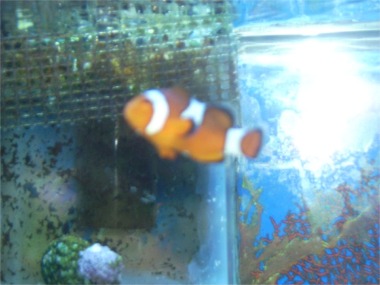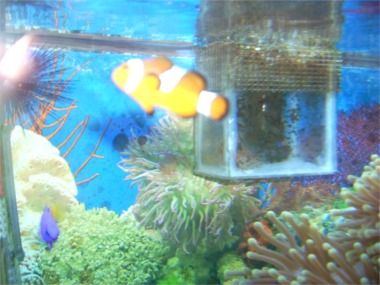|
|
Nutrition |
|
||
|
|
||||
|
Clownfish obtain nutrients by being predators
in the water. They can be
classified as general
omnivores because they feed on equal amounts of
algae and animals. This species obtains most of its nutrients by
scavenging for algae, copepods, isopods and zooplankton that can
be found near its host. Clownfish also rely on their host anemone
to provide food, such as any uneaten prey captured by the stinging tentacles, parasites on
the host or dead tentacles. When not protected by their host
anemone, Amphiprion ocellaris are often
found as prey to larger fish and crustaceans found among the coral
reefs. For more information, see
Interactions and
Habitat. |
||||
|
The amount and variety of
food this species eats is based on the size of the clownfish. Larger fish generally have a wider range of food options
available to them
because they tend to venture farther from the host anemone. This
hunt, however, never goes more than few meters from the host. Smaller fish are forced to forage closer to the
anemone where food is limited in selection and quantity. Another
restriction placed on the clownfish is the level of predation.
When predation is high, larger fish obtain more food than smaller fish due to
competition and lower fitness levels. Once the clownfish has obtained its food,
the food is then stored as glucose. This stored glucose is
available to the fish later for energy. This species possesses a
closed circulatory system as well as a complete gut, meaning digestion occurs
only in the digestive tract, and any undigested food leaves the species
through the anus. |
||||

